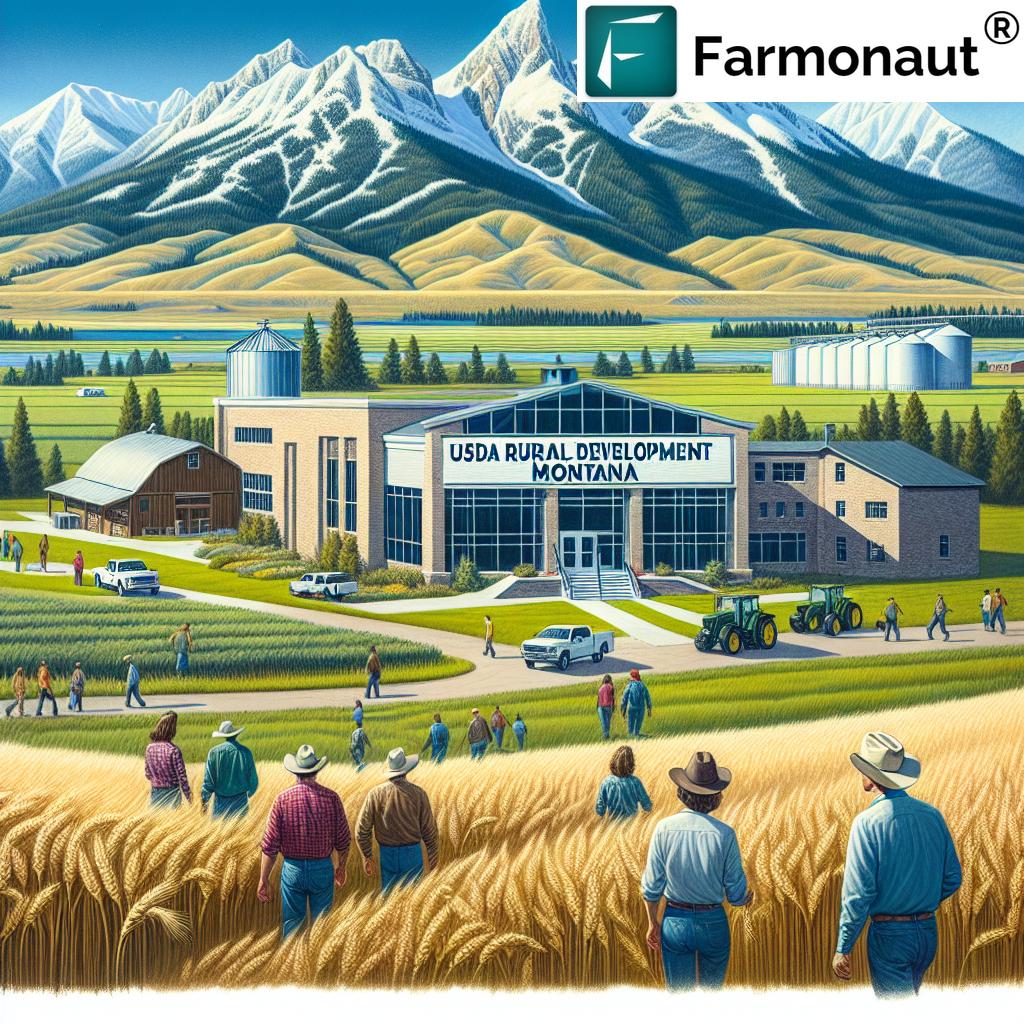Unleash Montana’s Rural Potential: USDA Revolutionizes Funding for Farmers and Innovators
BOZEMAN, Montana – In a groundbreaking move set to transform the agricultural landscape of Big Sky Country, the U.S. Department of Agriculture (USDA) Rural Development is ushering in a new era of support for Montana’s farmers, rural entrepreneurs, tribes, and organizations. This initiative aims to simplify access to crucial funding through three vital business programs, marking a significant milestone in USDA funding for Montana farmers and rural development.

Streamlining the Path to Success
The proposed changes, set to take effect on November 15, 2024, are designed to streamline and simplify the application processes for three key programs:
- Value-Added Producer Grant (VAPG)
- Agriculture Innovation Center (AIC)
- Rural Cooperative Development Grant (RCDG)
These updates represent a significant step forward in agricultural funding streamlining, addressing long-standing challenges faced by rural communities in accessing vital resources. By modernizing scoring criteria, standardizing application periods, and reducing documentation burdens, the USDA is paving the way for a more inclusive and efficient grant application process.
Empowering Montana’s Agricultural Innovation
The Value-Added Producer Grant Montana program stands at the forefront of this initiative. Historically, this program has been a cornerstone of support for Montana’s agricultural sector, funding over 150 projects annually nationwide with a total investment of around $30 million. These grants have been instrumental in helping Montana producers increase the value of their products, directly contributing to Montana rural economic growth.
John Doe, a Montana wheat farmer, shared his experience: “The VAPG program allowed us to invest in equipment to process our wheat into flour right on the farm. This not only increased our profit margins but also created new jobs in our community. It’s exciting to see the USDA making these grants even more accessible.”

Fostering Innovation and Cooperation
The Agriculture Innovation Center funding program is set to play a pivotal role in fostering Montana agricultural innovation. This initiative supports the establishment of centers offering technical and business development assistance to producers working on value-added agriculture projects. These centers will serve as hubs of innovation, driving forward new ideas and technologies in Montana’s agricultural sector.
Complementing this, the Rural Cooperative Development Grant Montana program aims to strengthen rural economies across the state by supporting the development and improvement of cooperatives and mutually owned businesses. This program is particularly crucial for small communities looking to pool resources and expertise to compete in larger markets.
A Call for Community Input
The USDA is actively seeking input from Montana stakeholders to help shape the future of these programs. Farmers, ranchers, rural business owners, and community leaders are encouraged to submit their comments and suggestions by October 16, 2024, via Regulations.gov. This participatory approach ensures that the final implementation of these changes will truly reflect the needs and realities of rural Montana.
“We’re not just changing programs; we’re changing lives,” said Sarah Johnson, USDA Rural Development State Director for Montana. “By making these grants more accessible, we’re investing in the future of our rural communities and the innovative spirit of Montana’s farmers and entrepreneurs.”
The Impact on Montana’s Rural Landscape
The streamlining of these rural business programs is expected to have a profound impact on Montana’s agricultural and rural business sectors. By simplifying the USDA grant application process, more small and medium-sized operations will have the opportunity to access funding that was previously out of reach due to complex application procedures.
For Montana’s farmers, this means:
- Increased opportunities to add value to their products
- Support for diversifying their operations
- Access to resources for adopting new technologies
For rural communities, the benefits include:
- Job creation through expanded local businesses
- Strengthened local economies
- Enhanced community resilience through diversified economic activities
Leveraging Technology for Agricultural Success
As Montana farmers look to innovate and expand their operations, many are turning to cutting-edge technologies to enhance their productivity and sustainability. One such tool gaining popularity is Farmonaut, a satellite-based crop monitoring system. Farmonaut’s technology aligns perfectly with the USDA’s goals of fostering agricultural innovation and supporting value-added production.
Check out Farmonaut’s offerings:
For those interested in integrating Farmonaut’s technology into their own agricultural applications, check out their API and API Developer Docs.
Looking Ahead: The Future of Montana’s Rural Economy
As these changes to USDA Rural Development Montana programs take effect, the future looks bright for Montana’s rural communities. The streamlined access to Montana rural business grants is expected to spark a wave of innovation and entrepreneurship across the state.
“These changes represent a significant investment in the future of rural Montana,” noted Dr. Emily Clark, an agricultural economist at Montana State University. “By making it easier for farmers and rural businesses to access funding, we’re likely to see an increase in value-added agriculture, more diverse rural economies, and stronger, more resilient communities.”
Conclusion: A New Chapter for Montana Agriculture
The USDA’s initiative to revolutionize funding for Montana’s farmers and rural innovators marks the beginning of an exciting new chapter in the state’s agricultural story. By streamlining access to crucial funding programs, the USDA is not just supporting individual farmers and businesses; it’s investing in the future of Montana’s rural communities.
As Montana’s agricultural sector embraces these changes and the opportunities they bring, the state is poised to become a leader in agricultural innovation and rural economic development. The coming years promise to be transformative for Montana’s rural landscape, with new ideas, technologies, and businesses flourishing across the Big Sky Country.
For more information on these programs and how to apply, visit the USDA Rural Development Montana website or contact your local USDA Rural Development office. The future of Montana’s rural economy is bright, and it starts with you.


